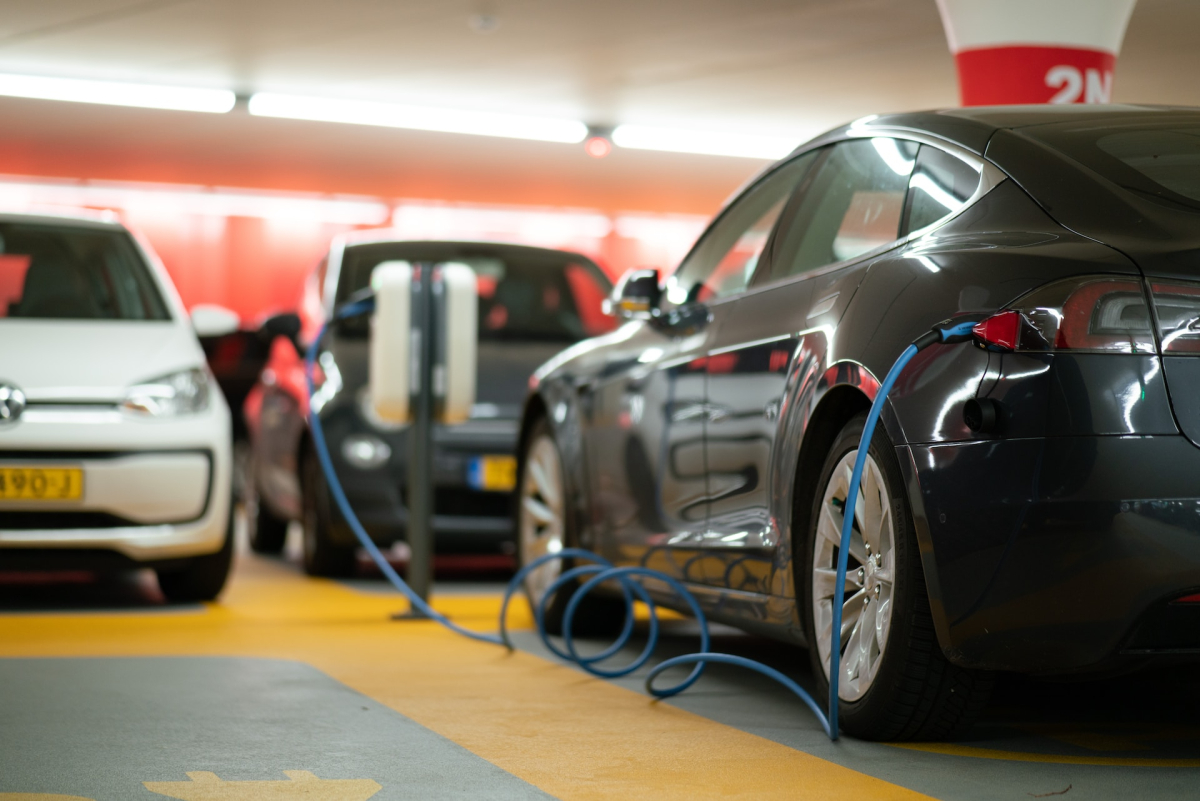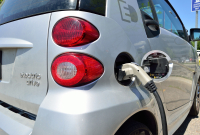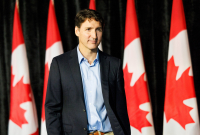Support strong Canadian climate journalism for 2025
A new poll shows nearly two-thirds of Canadians support or somewhat support the federal government’s 100 per cent tariff on Chinese-made electric vehicles (EVs). But to bring down the cost for consumers, experts widely agree the tariff should be married with more generous rebate programs for purchases of North-American-made EVs and greater support for Canadian EV manufacturers.
Without those extra incentives, the price of EVs will remain out of reach for many people and slow the country’s transition to a zero-emission vehicle market.
“The government could provide more robust rebates for consumers purchasing EVs to offset the added costs from tariffs,” said Sheldon Williamson, a professor at Ontario Tech University who focuses on EV battery systems. He also suggests offering financial support to Canadian EV manufacturers could help bring down production costs and ensure that domestically produced EVs remain competitive in price.
Last month, Canada proposed a 100 per cent tariff on Chinese-made EVs starting October 1, and a 25 per cent tariff on Chinese steel and aluminum products to follow. The move aims to align with the U.S. to protect North American industries from China's alleged unfair trade practices in EVs that are flooding the North American market.
The federal government currently offers rebates of up to $5,000 for eligible new EV purchases. Longer-range plug-in hybrid vehicles with an electric range of 50 km or more qualify for the full rebate, while shorter-range EVs with less than 50 km of electric range receive up to $2,500. The government has announced it will no longer offer federal rebates for EVs made in China.
Williamson suggested expanding federal incentives could help bridge the affordability gap for low- to middle-income households, especially by including used EVs, which are generally more affordable than new models.
Subsidizing home chargers and offering reduced electricity rates during off-peak hours would also help lower EV ownership costs, he said.
“Investments in public-charging infrastructure, particularly in rural areas, could reduce range anxiety and increase consumer confidence in EVs.”
Provincial incentives also play a critical role in making EVs affordable, Williamson said. Quebec and British Columbia, for example, offer substantial rebates on top of federal incentives, contributing to their high rates of EV adoption. However, Williamson said requirements, such as income caps for rebate eligibility, could limit their effectiveness. “Broadening the eligibility criteria could be key in ensuring more widespread adoption.”
Another crucial piece of the puzzle is bolstering Canada’s own EV manufacturing capabilities. Canada’s automotive sector, which employs over 500,000 workers and contributes $16 billion annually to the country’s GDP, is one of the largest industries in the country. Devin Arthur, director of government relations at the Electric Vehicle Society, told Canada’s National Observer that as the transition to EVs accelerates, supporting domestic manufacturers is crucial to keep them competitive. Incentives for domestic manufacturers could include tax breaks, research and development grants, and subsidies for retooling plants for EV production, Arthur said.
However, those incentives should come with the assurance that manufacturers are committed to offering more affordable EV models. Arthur suggested that domestic Original Equipment Manufacturers(OEMs) supported the Chinese EV industry while it worked on producing lower-cost EVs and expanding their range.
“I do still believe that there needs to be a phase-out period for the tariffs to keep auto OEMs on track,” Arthur said. “Because if they don't attempt to bring costs down leading to cheaper EV models, we absolutely do need lower cost models in the market, and if that happens to be eventually made in China, so be it.”
There are already signs of trouble among Canadian companies planning to supply local EV manufacturers. Last month, Umicore suspended construction of its $2.7-billion battery components plant in Loyalist Township, citing “the significant worsening of the EV market context and the impacts this has on the entire supply chain” as the reason for halting the project.
The struggle to balance EV affordability and domestic production is not unique to Canada. In Germany, Volkswagen, once a global leader in automotive manufacturing, has lost ground to Chinese competitors due to its late entry into the EV market and high production costs. Although Chinese EVs are not yet dominant in Canada, Chinese EV giant BYD, which has seen rapid growth in Europe, plans to enter the Canadian market next year.
Canada has already invested heavily in EV manufacturing, including a $28-billion commitment to build 10 EV battery plants, expected to create thousands of jobs. However, Williamson said to keep prices competitive, manufacturers must streamline production processes and work to reduce costs. Encouraging partnerships between Canadian manufacturers and technology firms could lead to innovations that drive down production costs and ultimately lower prices for consumers.
In 2023, Chinese EVs accounted for nearly 44 per cent of global EV sales, compared to just 12 per cent in Canada.
Experts suggest that higher gasoline taxes could also encourage cleaner vehicle purchases. In the U.K., a $300 per tonne CO2 tax pushes drivers to choose less polluting cars. In contrast, Canada’s low gasoline taxes lead to more polluting vehicle choices, hindering climate progress.
Regarding public support for the tariff on Chinese EVs, Williamson suggested it reflects a preference for protecting domestic jobs or a willingness to pay more to reduce reliance on foreign imports. “Public backing suggests that consumer concerns could be more focused on long-term affordability and sustainability, rather than immediate price hikes.”
With files from Cloe Logan & John Woodside






Comments
Decent article. There's an error towards the end:
"In 2023, Chinese EVs accounted for nearly 44 per cent of global EV sales, compared to just 12 per cent in Canada."
This appears to be mixing two entirely different statistics. The first part is about the Chinese share of global EV sales, whereas the second half looks like the percentage of cars sold in Canada that were EVs, because there is no possible way Canada manufactured 12% of global EVs last year. It's an easy mistake because the Chinese percentage of global EV sales and the percentage of vehicles sold in China that were EVs was very similar last year.
In 2023, Chinese EVs accounted for nearly 44 per cent of global EV sales.
In 2023, Chinese EVs accounted for just 12 per cent of EV sales in Canada.
The majority of EVs sold in Canada are presumably made in the USA.
EV subsidies are terrible transportation and climate policy.
We can cut far more emissions far faster and cheaper with public transit.
A bus can carry far more people. Cars are parked most of the time. Typically, the only passenger is the driver.
EV subsidies cut fewer emissions at a higher price per tonne of carbon. One of the least cost-effective, least efficient ways to spend public transportation and climate dollars.
Cars and car culture are the bane of urban life. Massive externalized environmental, health, and social costs. We do not need more cars clogging our city streets. EVs and EV subsidies promote urban sprawl, which spells the death of public transit.
EV subsidies target the affluent who do not require subsidies.
Meanwhile, non-drivers — the poor, the young, and the old — remain marginalized.
Feel free to buy an EV if you want one. Just don't ask me to help pay for it.